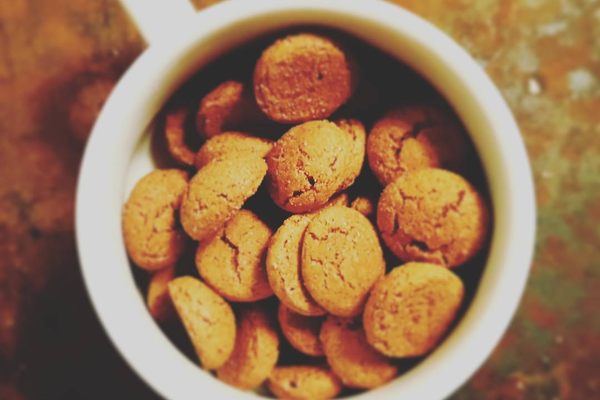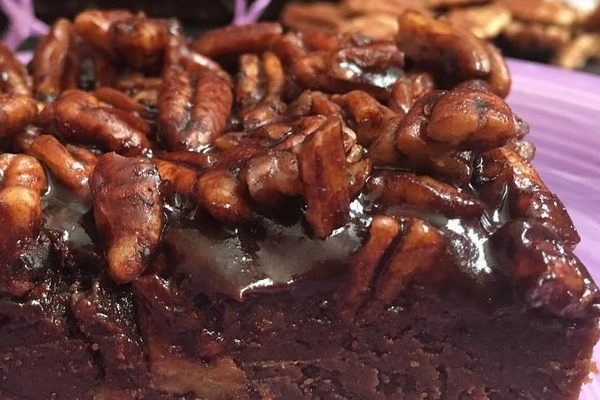The Dutch call Indonesian lapis legit “bacon cake.” In English, the sweet goes by “thousand-layer cake.” Though both names are hyperbolic, they are a testament to this treat’s decadence. The Indonesian-Dutch fusion dessert features 18 to 30 individually baked layers of spiced butter, sugar, and egg yolk.
Colonialists from the Netherlands arrived in Indonesia in the 15th century. With them came their version of German baumkuchen, a cake made by coating a spit with rings of batter. Indonesians and spice traders added local flavors—cinnamon, clove, mace, and nutmeg—to the buttery, eggy batter. Rather than use a cylindrical spit, bakers across the islands prepared the dessert in a square pan, broiling each delicate layer before adding the next. The result was a rich, intricate cake that was popular among both cultures. After the Dutch departed, they imported the signature spice mix so they could continue to make to make the treat.
Due to its time-consuming preparation and imported ingredients (butter for Indonesia, spices for the Netherlands), even a small piece of the cake can be pricey. But if you find the thought of 30 layers of butter and egg yolk excessive, Singaporeans and Malaysians also make a plant-based, nine-layer cake called kueh lapis. Unlike lapis legit’s European ingredients, kueh lapis reflects local produce. Southeast Asians make these wobbly, colorful squares by steaming ingredients such as coconut milk, rice flour, tapioca, and pandan.
Making things slightly confusing, the name kueh lapis is now used to describe either cake, and you can even find versions of lapis legit that incorporate the rainbow colors of its relative. The easiest way to know what kind of cake you’re eating? Just count the stripes.
Where to Try It
-
Le Gita Cakes
Jl. Pahlawan no. 240/10, Pontianak, 78122, IndonesiaThis Indonesian bakery specializes in lapis legit.
Written By
 rachelrummel
rachelrummel
Sources
- mysingaporefood.com/story/9-layer-kueh-%E4%B9%9D%E5%B1%82%E7%B3%95/
- www.foodiebaker.com/kueh-lapis-legit/
- thepeakmagazine.com.sg/gourmet-travel/royal-istana-ng-tian-wee-most-luxurious-kueh-lapis-in-the-world-is-delivered-in-jaguars/
- medium.com/the-hungry-ceo/the-historic-origins-of-chinese-new-year-goodies-71f51a3e662d
- www.thefooddictator.com/hirshon-indonesian-thousand-layer-cake-kue-lapis-legit/
- www.thespruce.com/indo-dutch-spekkoek-recipe-1128478


















